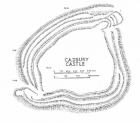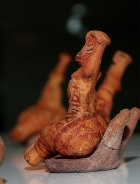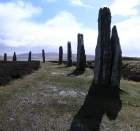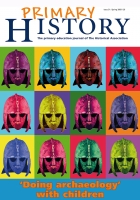The Stone Age to the Iron Age
British history at Key Stage 2 starts with the Stone Age. Historians and archaeologists disagree about when exactly the Stone Age started and ended, but an estimated date according to evidence is around 8-10,000 BC until 4000BC. Cheddar Man is the oldest complete human skeleton to be found in Britain, dating from 7150 BC. The Iron Age starts in around 200BC and has continued ever since! This unit therefore covers at minimum 8-10,000 years of history – you cannot possibly cover everything, so you have to pick and choose your enquiry question carefully. The emphasis of the unit of study is upon change which can be a useful guide to help you focus planning.
Sort by:
Date (Newest first) | Title A-Z
Show:
All |
Articles |
Podcasts |
Multipage Articles
-

Britain from the Iron Age to Robin Hood
ArticleClick to view -

Case Study: Engaging history with National Trust tracker packs
ArticleClick to view -

Case Study: Prehistory in the primary curriculum: A stonehenge to remember
ArticleClick to view -

Case Study: Working with gifted and talented children at an Iron Age hill fort in north Somerset
ArticleClick to view -

Celtic Britain: the land the Romans conquered
ArticleClick to view -

Children's thinking in archaeology
ArticleClick to view -

Exploring the Rollright Stones as part of your Stone Age to Iron Age study
ArticleClick to view -

Historical fiction: it’s all made up, isn’t it?
ArticleClick to view -

How did a volcano affect life in the Bronze Age?
ArticleClick to view -

How much has the weather mattered in British history?
ArticleClick to view -

Our Iron Age challenge
ArticleClick to view -

Place-names and the National Curriculum for History
ArticleClick to view -

Prehistoric Bristol
ArticleClick to view -

Prehistoric Scotland
ArticleClick to view -

Primary History 51
ArticleClick to view -

Pull-out Posters: Primary History 68
ArticleClick to view -

Pull-out Posters: Primary History 69
ArticleClick to view -

Recorded webinar: Teaching Prehistory
ArticleClick to view -

Rethinking the Stone Age to Bronze Age
ArticleClick to view -

Scheme of Work: Stone Age to Iron Age
ArticleClick to view

